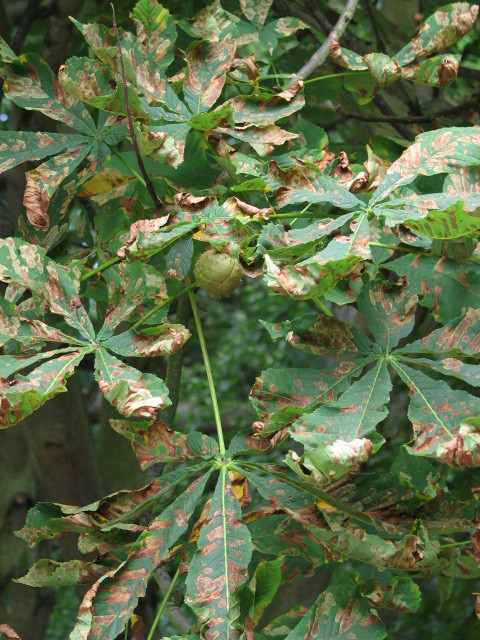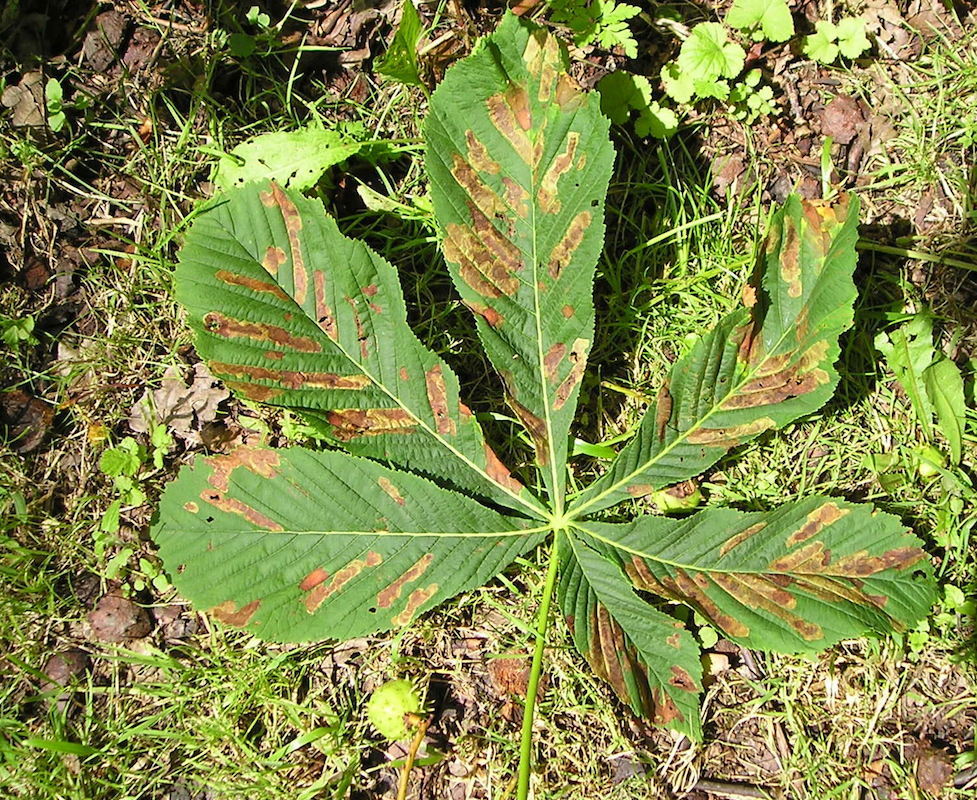Horse Chestnut : What annoys it?
The two major pests and diseases the horse chestnut suffers from are the leaf blotch and the leaf miner. The leaf blotch is caused by the fungus Guignardia aesculi. It causes the leaves to turn brown, especially in years with wet springs. Generally, this fungus doesn’t threaten the health of the tree unless the tree is particularly young, in which case all its leaves might turn brown and fall off prematurely. This fungus causes dry, brown spots to appear on the leaves, often surrounded by a yellow border. Not native to Europe, this fungus is believed to have originated in the United States.
Another pest the horse chestnut is affected by is the leaf miner, a small moth known as Cameraria ohridella. Similar to the leaf blotch fungus, this is hardly ever fatal; however, older branches sometimes die and fall off, which can harm the tree. The leaf miner causes the leaves to turn brown prematurely, shrivel up, and fall off long before their time. This pest is native to Europe; it was first reported in Macedonia in 1985.
More recently, it has also become apparent that the horse chestnut suffers from a bacterium, Pseudomonas syringae pv. aesculi. This bacterium causes “bleeding cankers” on horse chestnuts. First, patches of dying bark appear on the stems, branches or trunks. Then, a gummy liquid that can be rusty-red, yellow-brown, or black in color, oozes from those patches. Unlike the leaf blotch and the leaf miner, this bacterium is fatal to the tree over time.


